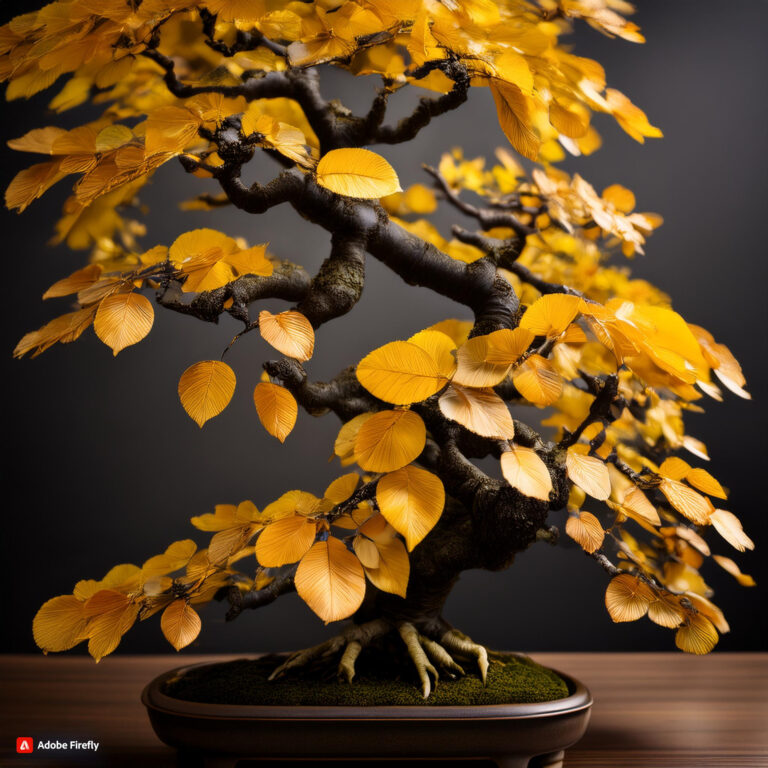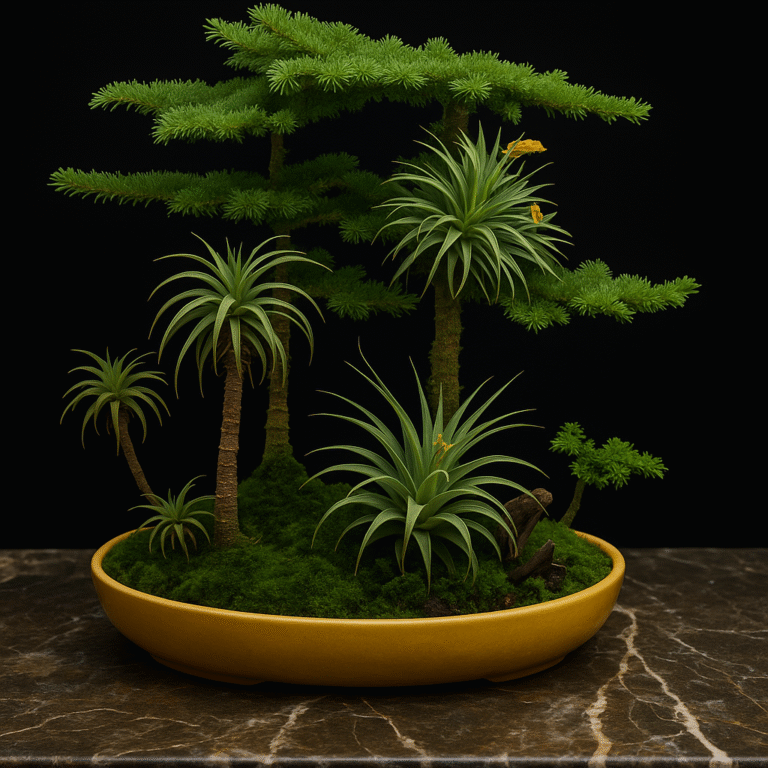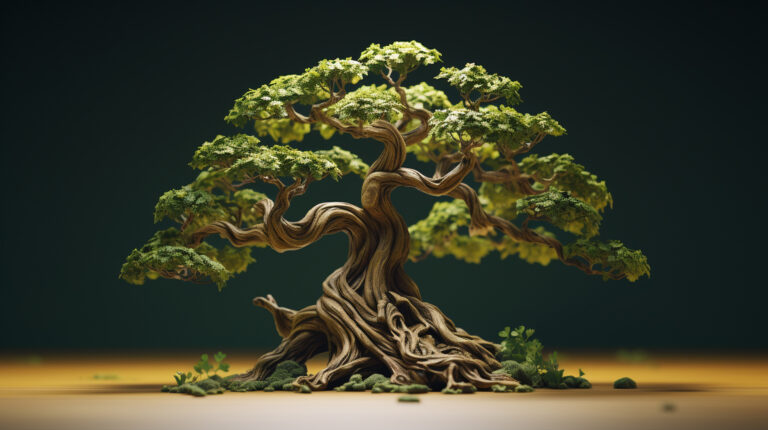How to choose a pot for a bonsai tree? The Art of the Pot
Bonsai, the delicate art of cultivating miniature trees, elevates ordinary plants into living sculptures. But the beauty of a bonsai extends beyond the tree itself. The pot, carefully chosen, plays a vital role in the overall aesthetic and health of your miniature masterpiece. how to choose the right pot for a bonsai tree is a question for many beginners in the journey of the bonsai world. I try to explain everything in this article.
The Right Pot for a bonsai tree: A Vital Choice
Selecting the perfect pot for your bonsai is a crucial step. It does more than just house the roots; it complements the tree’s form, enhances its visual appeal, and contributes to its well-being.
Aesthetic Harmony:
The right pot creates a visual conversation with the bonsai. It should frame the tree, accentuate its features, and contribute to a sense of balance and proportion. Different bonsai styles call for different pot shapes and styles, for instance:
- Formal Upright (Chokkan): A tall, rectangular pot emphasizes the tree’s straight form. Look for those known for their deep, rich glazes, or often featuring intricate carvings.
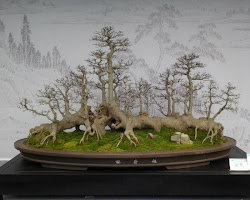
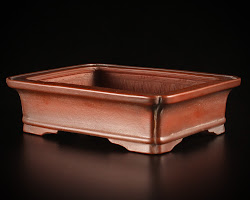
- Informal Upright (Moyogi): An oval pot complements the tree’s natural sway. Consider known for their earthy, matte glazes, or showcasing vibrant colors.

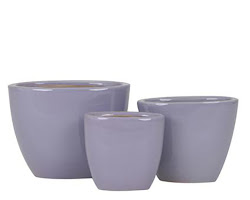
- Slanting (Shakan):A rectangular pot with a longer side on the viewing side creates a sense of movement. Explore made from weathered clay for a rustic look, or known for their shallow depth.

- Cascade (Kengai) and Semi-Cascade (Han-kengai):Shallow, glazed pots with good drainage work well for these cascading styles. Look for or with a wide mouth for showcasing dramatic branch flow.
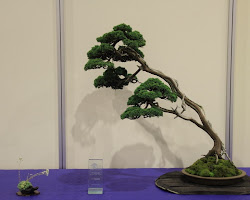
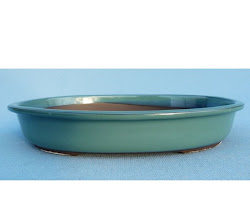
- Functional Necessity: Beyond aesthetics, the pot serves essential functions. It provides proper drainage to prevent root rot, promotes healthy root development, and offers stability to the tree, especially for larger or cascading styles.
Exploring the Potting World
Pot for a bonsai tree come in a variety of materials, shapes, and sizes, each offering distinct advantages and disadvantages.
Material Matters:
- Ceramic: Classic and elegant, ceramic pots offer good drainage and aeration. Explore or clays for high-quality options. However, they can be heavy and prone to chipping.
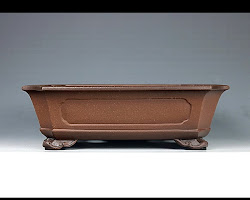
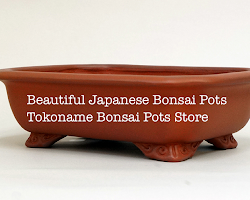
- Plastic: Lightweight and affordable, plastic pots are ideal for beginners. However, they may not provide optimal drainage or aeration. Consider made from breathable mesh for improved air circulation.

- Clay: A natural choice, clay pot for a bonsai tree offer excellent drainage and breathability. Look for for a rustic look. They are relatively inexpensive but can be fragile.

- Stoneware: Durable and weather-resistant, stoneware pots are perfect for outdoor bonsai. Explore or stoneware for a unique aesthetic. They can be heavy and may limit drainage options.
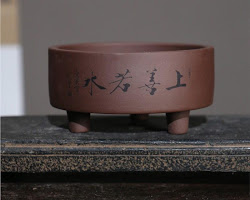
Ensuring a Healthy Foundation
Beyond aesthetics and size, there are key features to consider for a healthy bonsai:
- Drainage: Excess water can kill your bonsai. Proper drainage is essential. Look for pots with multiple drainage holes. Consider using to prevent soil blockage from soil particles.


- Aeration: Roots need air to breathe. Choose a pot material that allows for good air circulation. Unglazed clay pots or pots with ventilation holes are ideal.
- Stability: A sturdy pot is crucial, especially for larger or top-heavy bonsai styles. Consider the weight of the pot in relation to the tree size and style. Cascading bonsai may require heavier pots for counterbalance.
Aesthetics and Style: The Perfect Match
Just like fashion complements your figure, the pot for a bonsai tree should complement your bonsai’s style:
Color and Glazing: Adding Visual Interest
The pot’s color can significantly impact the overall impression. Consider:
- Color Harmony: Choose a color that complements the tree’s foliage and bark. For instance, a blue glazed pot for a bonsai tree can enhance the green of juniper bonsai, while a brown pot can complement the reddish bark of a ficus.
- Glazed vs. Unglazed: Glazed pot for a bonsai tree offer a wider range of colors and can add a touch of elegance. Unglazed pots have a more natural look and may better suit rustic styles. Consider with a unique black satin glaze or with a textured, unglazed surface.
The Art of Repotting: Keeping Your Bonsai Thriving
Bonsai need to be repotted periodically to maintain healthy root growth. Here’s a deeper dive into the process:
Signs Your Bonsai Needs Repotting:
Root circling, where roots coil tightly around the pot’s bottom, is a major indicator. Slow growth, difficulty watering (water runs straight through without being absorbed), and root protrusion from the drainage holes are other signs.
Seasonal Timing:
Repot during the tree’s dormant period, typically in early spring or fall. This minimizes stress on the tree.
The Repotting Process:
- Preparation: Gather tools like sharp bonsai shears, a water sprayer, and a repotting mix specifically formulated for bonsai. Choose a new pot slightly larger than the previous one, ensuring proper drainage (at least one drainage hole).
- Root Work: Carefully remove the bonsai from the old pot. Gently tease away some of the root ball, focusing on removing circling roots. Prune any diseased or damaged roots.
- Planting: Place the bonsai in the new pot, positioning it for desired visual appeal. Fill the pot with bonsai mix, ensuring no air pockets remain. Water thoroughly until water runs freely from the drainage holes.
Aftercare:
Keep the newly repotted bonsai in a protected area with indirect sunlight. Water regularly to maintain consistent moisture but avoid overwatering. Monitor the tree for signs of stress and adjust care accordingly.
The Masters of Clay: Exploring Renowned Potters and Brands
The world of bonsai pots boasts renowned artisans and established brands known for their high-quality craftsmanship. Here are some to explore:
Japanese Potters:
- Tokoname: Known for deep, rich glazes in a variety of colors, perfect for formal bonsai styles (refer to image earlier).
- Mashiko: Offers a range of styles, from rustic to modern, often featuring natural clay textures.
- Kifu: Weathered clay pots with a rustic aesthetic, ideal for informal bonsai (refer to image earlier).
Chinese Potters:
- Western Potters: Many talented Western potters create bonsai pots, often incorporating unique glazes and styles. Look for artisans at bonsai shows and online marketplaces.
- Yixing: Zisha clay pots are prized for their heat retention properties, ideal for flowering bonsai (refer to image earlier).
- Huangshan: Shallow pots made from a unique yellow clay, perfect for cascading bonsai (refer to image earlier).
- Penshui: Literati pots with a wide mouth, well-suited for showcasing dramatic branch flow (refer to image earlier).
Additional Tips and Resources

- Research bonsai pot care: Learn how to clean and maintain your bonsai pots to prevent algae growth and mineral deposits.
- Consider using pot risers: These elevate the bonsai, improving drainage and air circulation
- Join online bonsai communities: Connect with other enthusiasts, share photos of your bonsai and pots, and get expert advice.
In Conclusion
Choosing the right pot for a bonsai tree is an essential step in the bonsai journey. By considering aesthetics, functionality, and proper drainage, you can create the perfect foundation for your miniature tree to thrive. Remember, the perfect pot complements your bonsai, highlighting its beauty and promoting its health. With the right pot for a bonsai tree, care, and dedication, your bonsai will flourish for years to come, becoming a living testament to your dedication and artistic vision.


